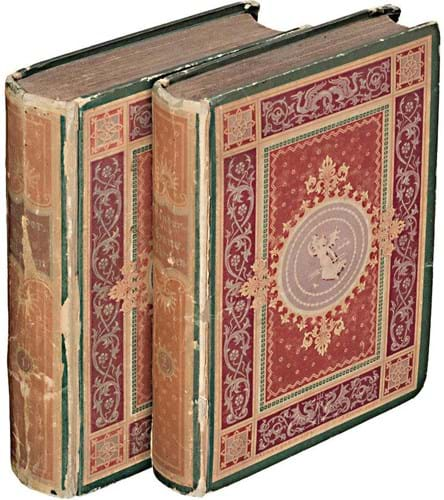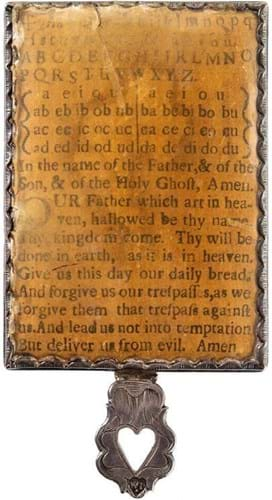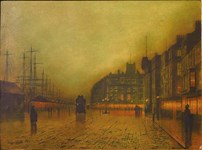For several decades now the name of US dealer and collector Justin Schiller has been inextricably linked with the rare and otherwise exceptional in the world of children’s books and their illustrations.
On December 16 a selection of such works from his own collection came to auction at Heritage (25/20/12% buyer’s premium) in Dallas.
Declared by Schiller to be probably “…the most important auction of rare children’s books that has ever been held in America”, it raised around $1.28m.
The most expensive lot, at $90,000 (£66,667), was a third edition of the Kinder- und Hausmärchen of the brothers Jacob and Wilhelm Grimm.
Published in two octavo volumes in 1837, this first enlarged and unabridged edition of that famous collection of ‘Nursery and Household Tales’ contains 167 fairy tales and a further nine ‘Kinderlegenden’.
In original decorative boards, it was a copy inscribed by Wilhelm Grimm to a friend who had helped in building up the collection.
Pirated Perrault
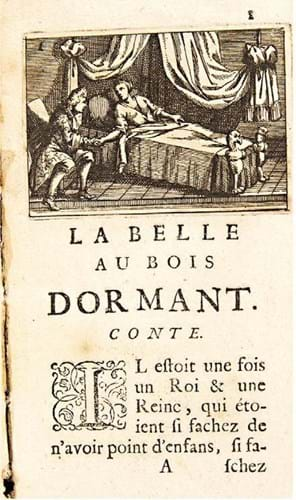
Page featuring ‘Sleeping Beauty’ from the tiny pirated edition of Perrault’s 1697 fairy tales – $57,500 (£42,593) at Heritage.
Among earlier lots offered was a tiny, pirated copy of Charles Perrault’s pioneering collection of fairy tales of 1697, the Histoires ou Contes du Temps Passé… that introduced many young readers to such now familiar figures as Cinderella, Sleeping Beauty and Little Red Riding Hood.
Issued in the same year as the original, and a tiny piracy that would sit in the palm of one’s hand, it may have been the work of an Amsterdam printer, Jacques Desbordes.
Featuring a frontispiece and eight other headpiece illustrations, all engraved in reverse after the designs of Antoine Clouzier’s originals, this first state copy in a restored period binding made $57,500 (£42,593).
Offered very early in the proceedings, an incised silver hornbook, dated to c.1680 and possibly English or Dutch, had proved a good omen for the day in doubling its estimate to sell at $16,500 (£12,222).
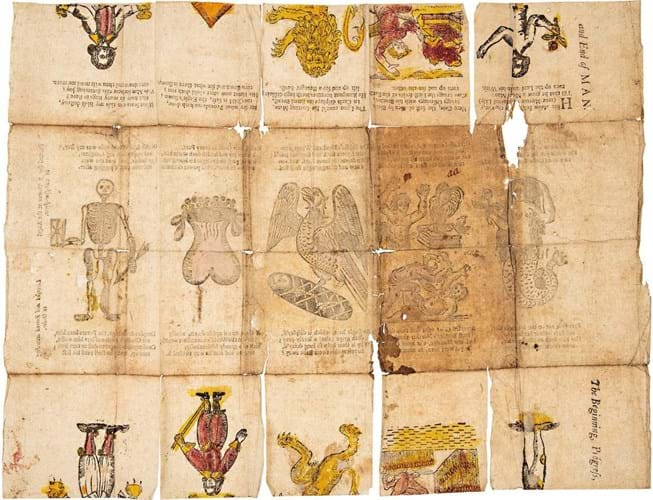
'The Beginning, Progress and End of Man', a harlequinade of the 1680s – $26,000 (£19,259) at Heritage.
Measuring around 12 x 16in (30.5 x 40.5cm) when unfolded, The Beginning, Progress and End of Man, a harlequinade printed in London in the late 1680s, was a third edition and in poor condition in places. However, as one of only a handful of coloured examples recorded, it sold at $26,000 (£19,259).
An 1835, first issue of Hans Christian Andersen’s Eventyr, Fortalte for Børn, or ‘Fairy Tales told for Children’, lacked the original wrappers and final contents page but this little work, his first collection of such tales, is exceptionally rare. This copy, inscribed “To the small Peter Koch from his big friend H. C. Andersen”, sold at $34,000 (£25,185).
A 1900 first of L Frank Baum’s The Wonderful Wizard of Oz set an auction record for any uninscribed example of this famous work at $65,000 (£48,150).
Privately published by Potter
Bid to $42,000 (£31,110) was one of the 250 copies of The Tale of Peter Rabbit that Beatrix Potter had privately printed and published in December 1901 in the hope of attracting the interest of a commercial publisher.
She funded a second issue herself, but its appeal had been noted and in pencil on the title page of this first issue she has written “F. Warne & Co 15 Bedford St Strand/to be published in the autumn 1902.” It was the beginning of a long and profitable association.

Unfinished ink and watercolour drawing of dancing rabbits by Beatrix Potter – $50,000 (£37,037) at Heritage.
Unsigned and unfinished, but undoubtedly the work of Potter, an ink and watercolour drawing of the 1890s depicting seven bunnies dancing around another who plays a pipe while seated on a stool realised $50,000 (£37,037). Once in the collection of her younger brother, Bertram, it is an unfinished early version of a scene from The Rabbit’s Christmas Party that eventually featured eight dancing rabbits.
Horton as Matilda
Among later 20th century lots on offer was an ink drawing of c.1938 bearing the legend ‘Matilda the Compassionate Elefant Who Devotes her Days to the Hatching of Orphan Humming-Bird Eggs’.
Sold at $30,000 (£22,222), it depicts an early version of Horton, a character created by Theodor Seuss Geisel, or Dr Seuss, but who is seen here as ‘Matilda, the Elephant with a Mother Complex’ in a short story published in a humour magazine, Judge.


